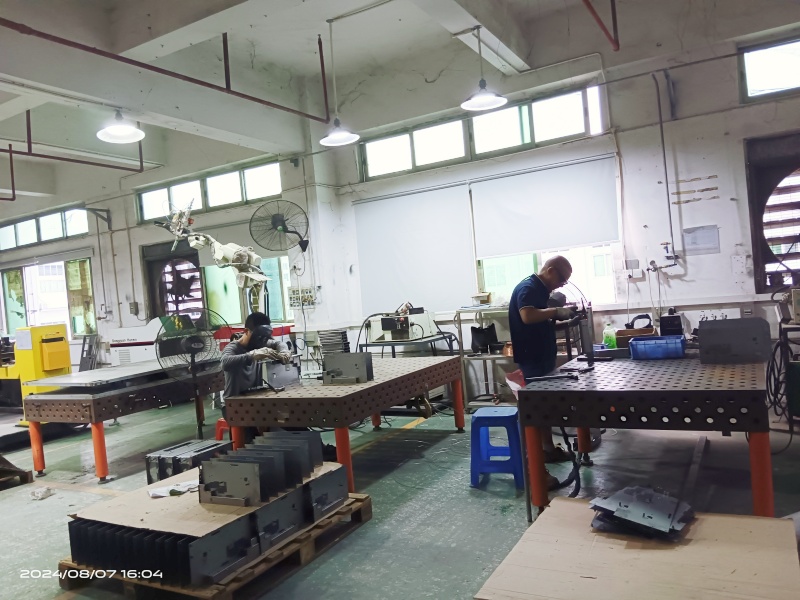There are three main processes: cutting, bending and assembly. Other processes include punching, folding and stretching. Sheet metal fabrication is a common manufacturing method for enclosures within computers.
Metal enclosures are commonly used in various industries to protect electronic components, machinery, and other equipment. The manufacturing process involves several steps, from material selection to final assembly. Here’s a general overview:
1. Material Selection
- Material Choice: Common materials include aluminum, steel, and stainless steel. The choice depends on the application, such as the need for corrosion resistance, strength, or lightweight properties.
- Sheet Metal: The metal usually starts as a flat sheet, which will be cut, bent, and formed into the desired shape.
2. Design and Prototyping
- CAD Design: Engineers create a detailed design using Computer-Aided Design (CAD) software, specifying dimensions, cutouts, and features.
- Prototyping: A prototype may be produced to test the design before full-scale production.
3. Cutting
- Laser Cutting: High-precision lasers cut the sheet metal into the required shapes and sizes. Laser cutting is common due to its accuracy and speed.
- Punching: A punch press can be used to create holes, cutouts, and other features. This is often used for mass production.
- Water Jet Cutting: For thicker materials or where heat may affect the metal properties, water jet cutting may be used.
4. Bending
- Press Brake: The cut metal is placed in a press brake machine that bends it to the required angles. This is a critical step in forming the enclosure’s shape.
- Roll Bending: For cylindrical or curved shapes, roll bending is used.
5. Welding and Assembly
- Welding: Different parts of the enclosure may be welded together. Common techniques include MIG, TIG, and spot welding.
- Fastening: Screws, bolts, rivets, or other fasteners may be used for assembly.
- Sealing: For enclosures that need to be watertight or dustproof, seals and gaskets are added.
6. Surface Treatment
- Deburring: After cutting and bending, sharp edges and burrs are removed to make the enclosure safe to handle.
- Powder Coating: The enclosure may be powder-coated for added durability, corrosion resistance, and aesthetic appeal.
- Anodizing: For aluminum enclosures, anodizing may be applied to enhance corrosion resistance and appearance.
7. Finishing
- Machining: Additional features like threaded holes or specific cutouts might be machined into the enclosure.
- Labeling: Labels, logos, or instructions can be printed or etched onto the surface.
- Quality Control: The final product undergoes inspection to ensure it meets design specifications and quality standards.
8. Final Assembly
- Component Installation: If the enclosure is part of a larger product, electronic components or other items may be installed inside the enclosure.
- Testing: The completed assembly may undergo functional testing to ensure it performs as expected.
9. Packaging and Shipping
- The finished enclosures are packaged and shipped to customers or used in further production.
This process may vary depending on the complexity of the enclosure, the materials used, and the specific requirements of the end product.
sheet metal fabrication company china | china sheet metal forming manufacturers | china sheet metal fabrication manufacturers | china custom sheet metal parts | china sheet metal fabrication companies | china sheet metal fabrication factory | sheet metal fabrication companies in china | sheet metal parts manufacturing china | china sheet metal parts manufacturers | china sheet metal parts company | china metal enclosure manufacturers | china aluminum sheet metal fabrication manufacturers | china sheet metal manufacturing manufacturers
